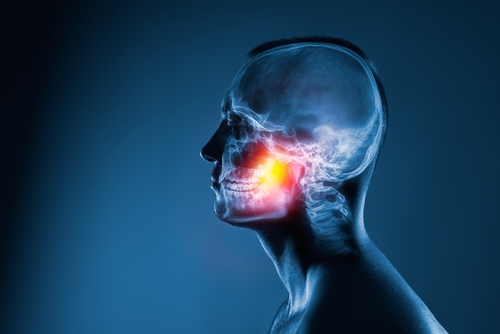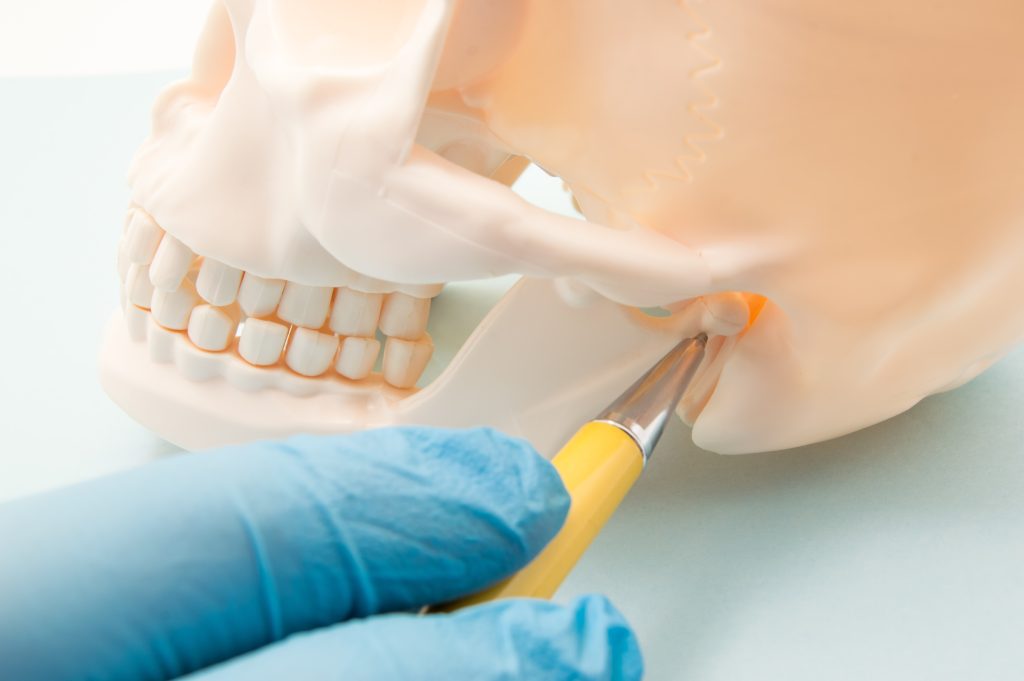The temporomandibular joint, or TMJ, is a complex joint that connects your lower jaw to your skull, allowing for essential movements like chewing, speaking, and swallowing. When issues arise with this joint, it can cause discomfort and pain, impacting your quality of life. Whether you’re experiencing jaw pain, clicking, or difficulty opening your mouth, read on to learn when it’s necessary to seek professional dental care for your TMJ symptoms.
Understanding TMJ/TMD Disorders
TMJ disorders, also known as temporomandibular joint dysfunction, refer to a range of conditions affecting the jaw joint and muscles. These disorders can cause various symptoms, including jaw pain, tenderness, clicking, popping, or difficulty opening your mouth. The exact cause of TMJ disorders can be a combination of factors, such as arthritis, bad bite, inflammation, muscle tension, or jaw injury. Understanding the structure and functioning of the temporomandibular joint is crucial to comprehending TMJ disorders and their impact on your oral health.
What Is TMJ Disorder?
TMJ disorder, often referred to as temporomandibular joint dysfunction (TMD), encompasses a range of conditions that affect the jaw joint and related muscles. This disorder can cause discomfort, pain, tenderness, and limited jaw movement. Common symptoms of TMJ disorders include jaw pain, clicking, popping, tenderness, or soreness in the jaw area or front of your ear. These symptoms may worsen with jaw movement, chewing, or yawning, and may even radiate to the side of your face, or lower teeth, or cause headaches. TMJ disorders can have a significant impact on your quality of life, affecting your ability to speak, eat, and engage in daily activities comfortably.
The exact cause of TMJ disorders is often multifactorial, making diagnosis and treatment complex. Contributing factors may include arthritis, dysfunction of the jaw joint, inflammation, muscle tension, bad bite, or jaw injury. Determining the exact cause of your TMJ disorder requires a comprehensive evaluation that often involves a physical examination, health history review, and potentially, imaging tests like MRI or CT scans. Dental professionals, with their expertise in facial anatomy, muscle function, and oral health, play a crucial role in diagnosing and managing TMJ disorders.
The Role of the Temporomandibular Joint
The temporomandibular joint, commonly known as TMJ, is the joint responsible for connecting your lower jaw to your skull. This joint plays a vital role in allowing for smooth jaw movement, enabling you to perform essential functions such as chewing, speaking, and swallowing. The TMJ structure consists of the lower jaw bone, called the mandible, and the temporal bone of the skull.
In TMJ disorders, problems occur in the temporomandibular joint area, leading to a variety of symptoms such as jaw pain, clicking, tenderness, or difficulty opening your mouth. Dysfunction in this joint can impact your jaw movement and the muscles surrounding the joint, causing discomfort and limited jaw function. Clicking or popping sounds when you open or close your mouth may indicate issues with the TMJ area.
Diagnosing TMJ disorders involves a careful examination of your jaw movement and tenderness in the TMJ area. Dental professionals are trained to evaluate the structure, movement, and health of your TMJ, allowing them to identify any abnormalities or signs of dysfunction. Additional tests, such as CT scans or arthrocentesis, may be recommended to assess the exact cause, extent of damage, or inflammation in the TMJ area. TMJ disorders can also be associated with other conditions like fibromyalgia or irritable bowel syndrome, making an accurate diagnosis crucial for effective treatment.
Causes of TMJ Disorders
The causes of TMJ disorders can vary, often involving a combination of factors. Habits like clenching or grinding your teeth, especially during periods of stress, can contribute to jaw muscle tension and inflammation of the temporomandibular joint. Long-term factors, such as arthritis, dysfunction of the jaw joint, inflammation, or an imbalanced bite, can also contribute to TMJ disorder symptoms. Dental treatments, including orthodontic work or crowns, can impact the alignment of your jaw and temporomandibular joint, potentially leading to TMJ disorders. Understanding the triggers of TMJ disorders is key to effective treatment and prevention of further complications.
Common Triggers of TMJ Disorders
Understanding the common triggers of TMJ disorders can help you identify potential factors contributing to your jaw pain or discomfort. Some of the common triggers include:
- Chronic teeth grinding or clenching, especially during sleep, can cause jaw muscle tension, wear on teeth, and inflammation of the temporomandibular joint.
- Frequent chewing of gum, hard foods, or biting nails can strain the jaw joint and muscles, leading to TMD symptoms.
- Injuries to the jaw, such as accidents or trauma, can result in jaw pain, clicking, or tenderness, potentially triggering TMJ disorders.
- Emotional or physical stress can cause muscle tension, including jaw muscles, contributing to TMJ symptoms.
- Poor jaw movement habits, such as excessive yawning, opening your mouth too wide, or chewing on one side of your mouth, can strain the temporomandibular joint, leading to discomfort or pain.
- Identifying these triggers and making lifestyle changes, such as practicing stress reduction techniques, chewing on both sides of your mouth, and avoiding hard, chewy, or tough foods, can help manage or prevent TMJ disorder symptoms.
Long-Term Factors contributing to TMJ Disorders
Over time, factors such as arthritis, joint inflammation, or fibromyalgia can affect TMJ disorders. Additionally, conditions like ligament issues, jaw misalignments, and tenderness may exacerbate temporomandibular symptoms. It’s important to note that TMJ disorders can stem from a combination of factors including a bad bite, jaw structure, or muscle tension. In some cases, healthcare providers may suggest treatments such as arthrocentesis or arthroscopy to address long-term TMJ issues, which can lead to symptoms like jaw pain, discomfort, or clicking over time.
Identifying TMJ Disorder Symptoms
Determining TMD symptoms is crucial. They often manifest as pain or tenderness in the front of your ear, clicking, popping, or grating sounds in the jaw joint when opening or closing the mouth, and a feeling of aching facial pain. Moreover, TMD symptoms can also cause headaches, discomfort while chewing, and locking of the joint, making it difficult to open or close the mouth. Being mindful of these signs can lead to early intervention and management to alleviate discomfort and improve overall quality of life.
Common Symptoms of TMJ Disorders
Discomfort in the area in front of your ear and around your jaw often indicates TMD symptoms. This can lead to difficulty opening the mouth or chewing and soreness in the jaw joint. In addition, TMD pain may cause headaches, facial discomfort, muscle tenderness, or difficulty chewing. If you experience discomfort in the jaw, side of the face, or lower teeth, it could be an indication of TMD. A healthcare provider can evaluate TMD symptoms through a physical examination or imaging techniques.
How TMJ Disorders affect daily life
Living with TMJ disorders can significantly impact daily life. Simple activities like eating, speaking, or yawning can become challenging due to the discomfort and tenderness associated with TMD symptoms. Chronic pain, headaches, and jaw clicking can lower the overall quality of life, making it difficult to relax facial muscles. Managing these symptoms may involve relaxation techniques, physical therapy, or the use of mouthguards to alleviate discomfort. Recognizing these signs early on is crucial for effective treatment and improving the overall quality of life.
The Importance of Early Diagnosis
Early diagnosis of TMD symptoms is crucial for effective management. Recognizing the signs, such as pain in the front of your ear, and getting a proper diagnosis can prevent the condition from worsening. Dental professionals play a key role in the abbreviation of TMD symptoms and in providing timely interventions. The impact of TMD on daily life underscores the significance of early diagnosis and prompt treatment to alleviate discomfort and improve quality of life.
How TMJ Disorders are Diagnosed
Upon examination of jaw movement and tenderness in front of your ear, healthcare providers may suggest MRI or CT scans to evaluate TMD symptoms and the TMJ structure. Reviewing health history is vital for understanding TMD symptoms and their impact. The complexity of TMD causes requires a comprehensive analysis of various factors. Recent studies have noted a link between TMD and conditions like fibromyalgia and irritable bowel syndrome, emphasizing the significance of a thorough diagnosis.
The Role of Dental Professionals in Diagnosis
Dental professionals play a crucial role in diagnosing TMJ disorders, and examining jaw pain, clicking, and discomfort. They assess jaw movement, tenderness, and TMD symptoms in collaboration with healthcare providers. Nonsurgical treatments like mouthguards or relaxation techniques may be recommended to alleviate TMD symptoms. Additionally, they evaluate the alignment of the lower jaw and lower teeth to determine if a bad bite contributes to TMJ symptoms. Orthodontic treatment, crowns, or a combination of factors may impact TMJ dysfunction, all of which are carefully considered in diagnosis.
Non-Surgical Treatment Options
TMJ disorders can often be managed without surgery through non-surgical treatment options. These options include at-home remedies, such as applying ice packs or eating soft foods. Non-surgical medical interventions like physical therapy and prescription medications can also help alleviate TMD symptoms. By addressing TMD symptoms with non-surgical treatments, individuals can often find relief without the need for surgical intervention. Being proactive about managing TMD symptoms can significantly improve one’s quality of life without resorting to surgical measures.
At-Home Remedies for TMJ Disorders
To alleviate jaw pain, soreness, and discomfort associated with TMJ disorders, self-care strategies play a crucial role. Patients are advised to practice relaxation techniques, jaw exercises, and facial muscle relaxation to manage TMJ pain effectively. Additionally, applying hot or cold packs to the front of your ear near the temporomandibular joint can help ease inflammation and soreness. Moreover, maintaining a balanced diet by avoiding hard, chewy, or tough foods is essential in reducing discomfort related to TMD symptoms. Finally, incorporating physical therapy techniques, massage, and jaw movement exercises into daily routines can significantly improve mouth opening and reduce tension in jaw muscles.
When to Consider Surgical Interventions
Considering surgical interventions is crucial for individuals experiencing severe TMD symptoms who are unresponsive to non-surgical treatments. When persistent pain or limited jaw movement significantly impacts daily life, seeking a consultation is advisable. The abbreviation “TMD” refers to disorders affecting the front of your ear to the patient’s jaw, emphasizing the need for timely intervention. Surgical procedures should be carefully evaluated based on individual needs and the potential benefits they offer for improved quality of life.
Surgical Treatments for TMJ Disorders
Surgical intervention for TMJ disorders involves various procedures to address inflammation, clicking, and pain in the temporomandibular joint. Healthcare providers may recommend TMJ arthroscopy, a minimally invasive technique, to examine and treat the affected area. Arthrocentesis, another surgical treatment, focuses on reducing inflammation, improving jaw movement, and alleviating discomfort. In severe cases, joint restructuring, such as repositioning of the mandible, may be necessary to restore proper function and enhance the quality of life for patients. Healthcare professionals evaluate the need for surgical interventions based on the severity and impact of TMD symptoms on daily life.
Evaluating the Risks and Benefits of Surgery
When considering surgical treatments for TMJ disorders, a thorough assessment of potential risks and benefits is crucial. Patients must be fully informed about post-operative care, recovery period, and expected outcomes. Discussing with healthcare providers allows a comprehensive understanding of the potential impact on jaw movement, pain reduction, and overall quality of life post-surgery. Healthcare providers carefully evaluate the risks against the benefits to facilitate informed decisions regarding TMJ surgery, abbreviated as tmd symptoms, in front of your ear area.
Preventive Measures for TMJ Disorders
To reduce the risk of TMJ disorders, it’s essential to be mindful of habits that put pressure on the front of your ear. Being aware of TMD symptoms and avoiding activities that exacerbate them can significantly help in preventing this condition. Additionally, abbreviating excessive jaw movements and maintaining good posture can alleviate strain on the temporomandibular joint, thus lowering the likelihood of developing TMJ disorders.
Importance of Regular Dental Checkups
Regular dental checkups are essential for catching and addressing TMD symptoms early, helping to prevent further complications. With personalized advice from dental professionals, you can learn how to manage TMD symptoms in your daily life. These checkups also allow dentists to monitor the progression of TMD disorders and recommend appropriate treatments based on your specific symptoms. By seeking early diagnosis through regular dental checkups, you can take proactive measures to address TMD-related issues and prevent them from worsening.
Managing TMJ Disorders Daily
Managing TMJ disorders daily involves actively employing jaw relaxation techniques to minimize discomfort. Being mindful of jaw movements and avoiding excessive chewing can effectively alleviate TMJ symptoms. Wearing a mouthguard at night can help prevent teeth grinding and relieve TMJ pain. Additionally, maintaining proper posture and avoiding jaw clenching play a crucial role in managing TMJ disorders. Lastly, incorporating stress management techniques and mindfulness into daily routines can significantly reduce TMJ discomfort, promoting better overall well-being.
When Should You See a Dentist for TMJ Symptoms?
Persistent jaw pain, clicking or tenderness in the temporomandibular joint area, headaches, ear pain, difficulty opening the mouth, changes in bite, or jaw clicking – these are all signs that you should consult a dentist for an accurate diagnosis of your TMJ symptoms. A thorough examination by a dentist can help identify the exact cause and provide appropriate treatment options. Remember, early intervention is key to effectively managing TMJ symptoms and maintaining a healthy, pain-free quality of life. If you are experiencing any TMJ symptoms, don’t hesitate to schedule an appointment with Park Street Dental of Grove City today.




